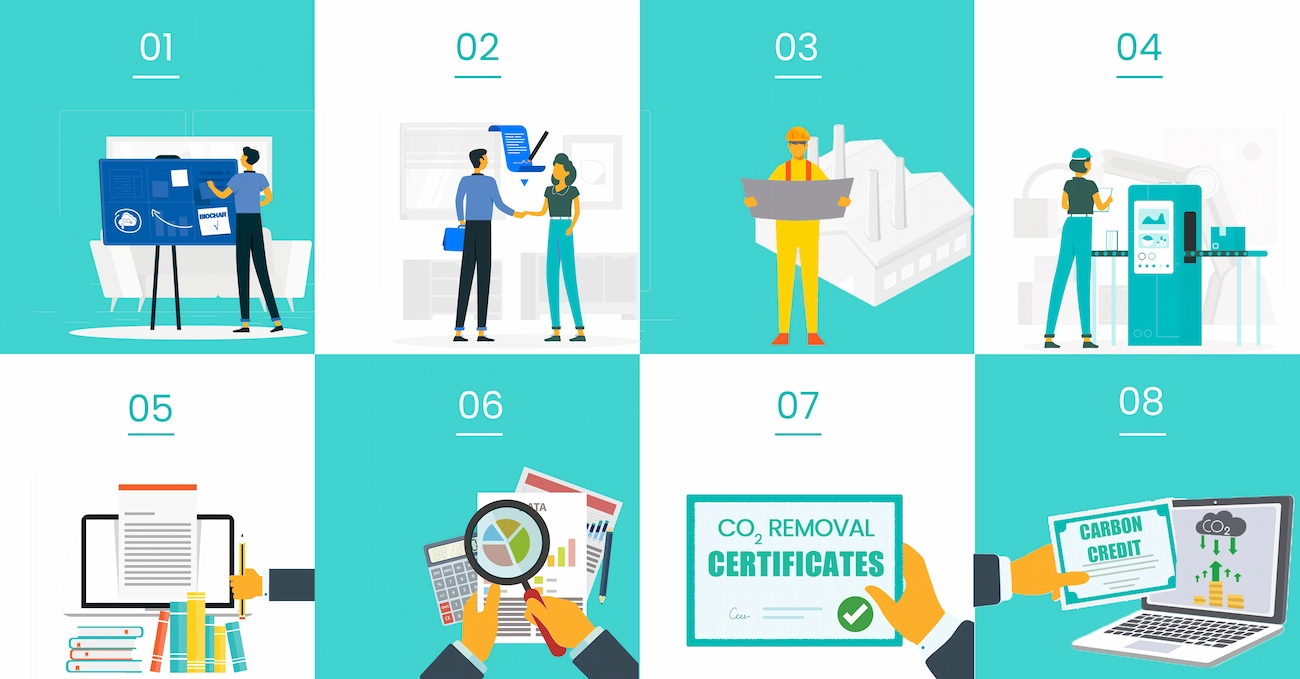Acquiring carbon credits with biochar involves several key steps, from production to verification and certification. Here’s a comprehensive guide to help you through the process:

1. Understand Biochar and Carbon Credits
- Biochar: A stable form of carbon produced by heating organic material (biomass) in a low-oxygen environment (pyrolysis). It sequesters carbon in soil for hundreds to thousands of years.
- Carbon Credits: Tradable certificates representing the reduction or removal of one metric ton of carbon dioxide (CO2) or its equivalent from the atmosphere.
2. Set Up Biochar Production
- Feedstock Selection: Choose sustainable biomass sources such as agricultural waste, forestry residues, or dedicated energy crops.
- Pyrolysis Technology: Invest in efficient and scalable pyrolysis units that match your production capacity and feedstock type.
- Quality Control: Ensure that the biochar produced meets standards for carbon content, stability, and other relevant properties.
3. Quantify Carbon Sequestration
- Carbon Content Analysis: Test the biochar to determine its carbon content, usually requiring a laboratory analysis.
- Stability Assessment: Confirm the stability and permanence of carbon in the biochar, as this affects the amount of carbon credits you can claim.
- Quantification Methods: Use standardized methodologies to calculate the amount of CO2 sequestered. The International Biochar Initiative (IBI) and other organizations provide protocols for this purpose.
4. Verification and Certification
- Select a Certification Body: Choose an accredited carbon credit certification body, such as the Verified Carbon Standard (VCS), Gold Standard, or the American Carbon Registry (ACR).
- Project Documentation: Prepare comprehensive documentation detailing the biochar production process, feedstock sources, carbon content, and sequestration calculations.
- Third-Party Verification: Undergo verification by an independent third party to ensure the accuracy and integrity of your carbon sequestration claims.
- Issuance of Carbon Credits: Once verified, the certification body will issue carbon credits corresponding to the amount of CO2 sequestered.
5. Register and Sell Carbon Credits
- Registration: Register your carbon credits on a carbon market platform such as the Carbon Trade Exchange (CTX), Climate Action Reserve (CAR), or other relevant exchanges.
- Marketing and Sales: Promote your carbon credits to potential buyers, including corporations looking to offset their emissions, governments, and non-profits.
- Record Keeping: Maintain detailed records of all transactions and monitor the ongoing performance of your biochar project.
6. Ongoing Monitoring and Reporting
- Continuous Monitoring: Regularly monitor the biochar production process, carbon content, and soil integration to ensure continued compliance with certification standards.
- Annual Reporting: Submit annual reports to the certification body detailing the biochar production volumes, carbon sequestration, and any changes to the project.
